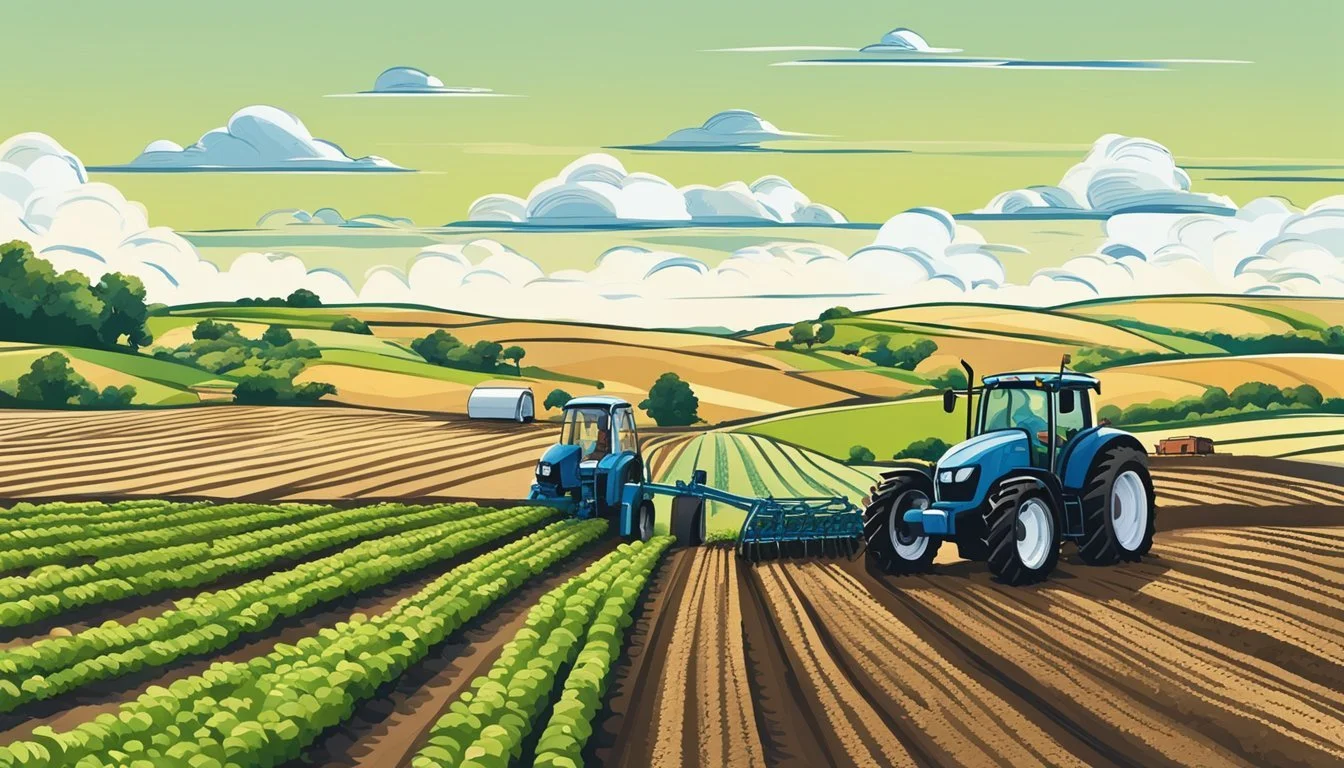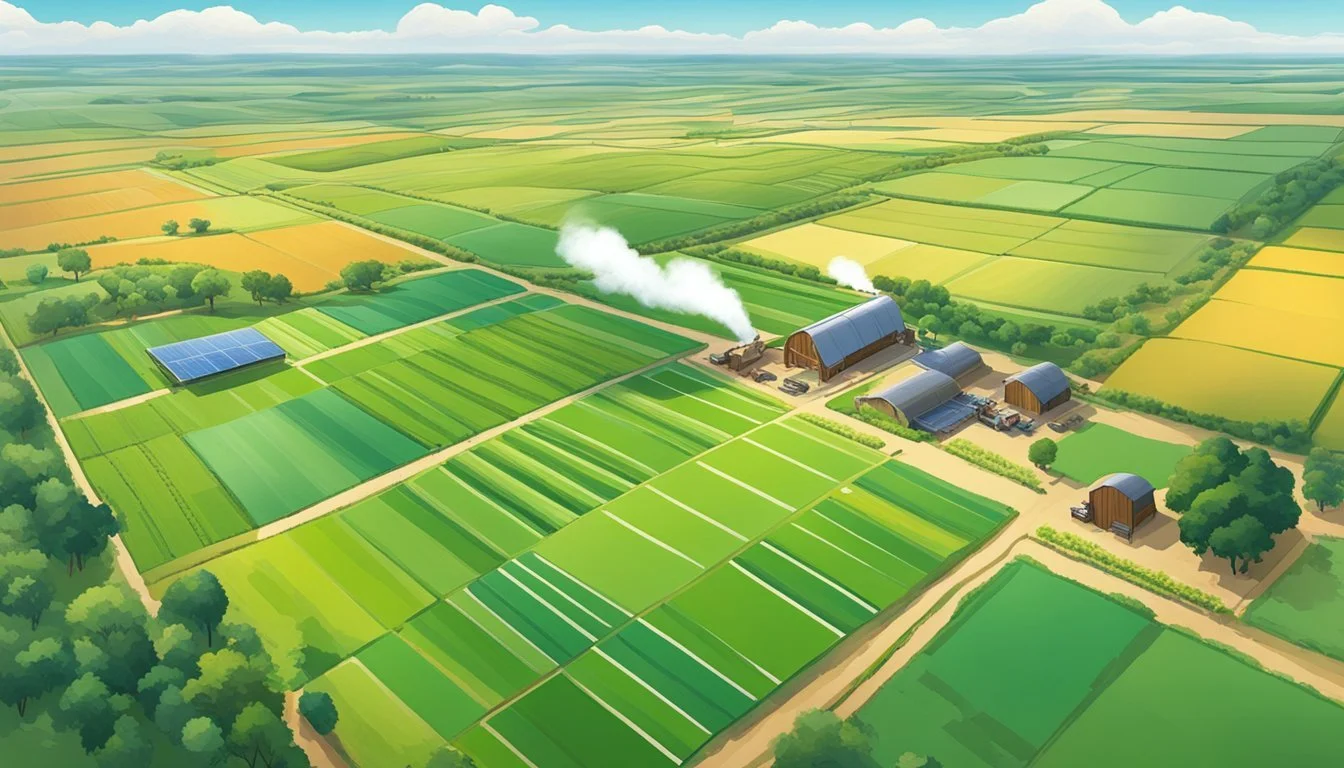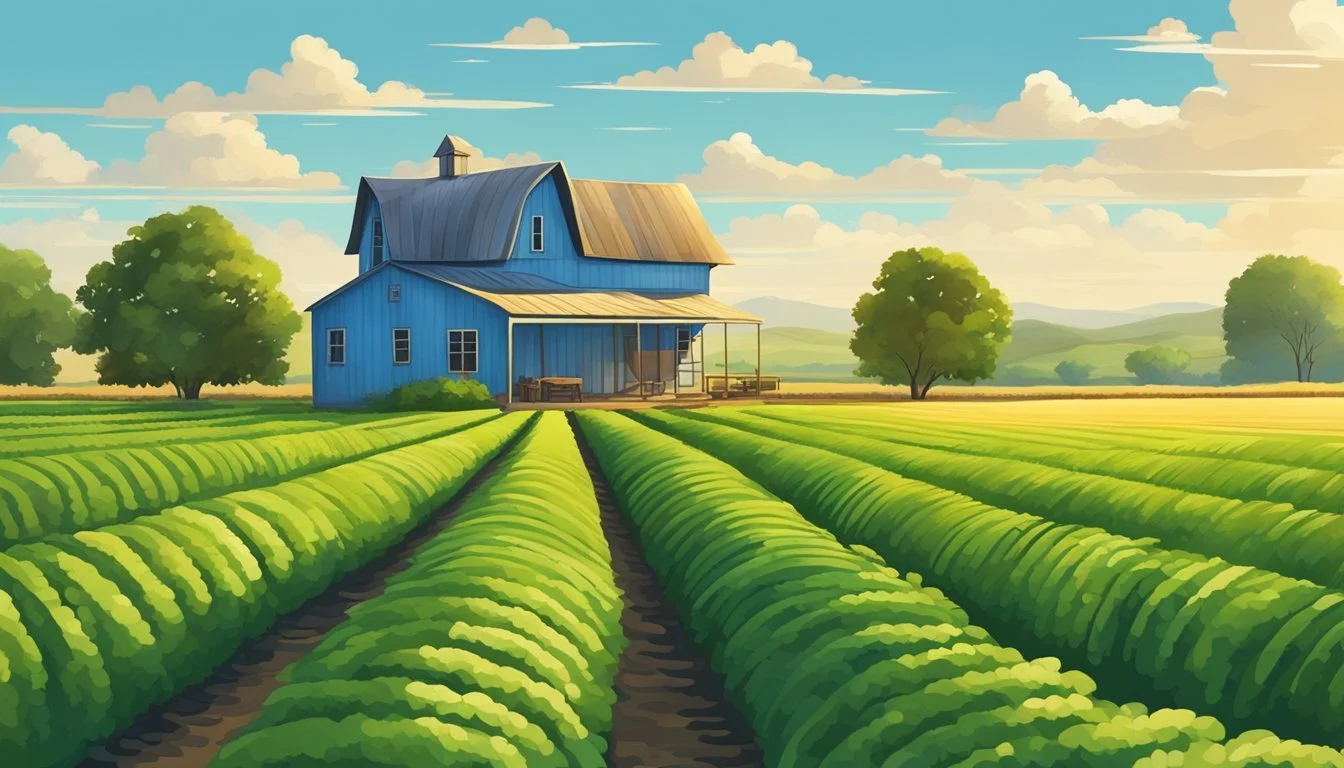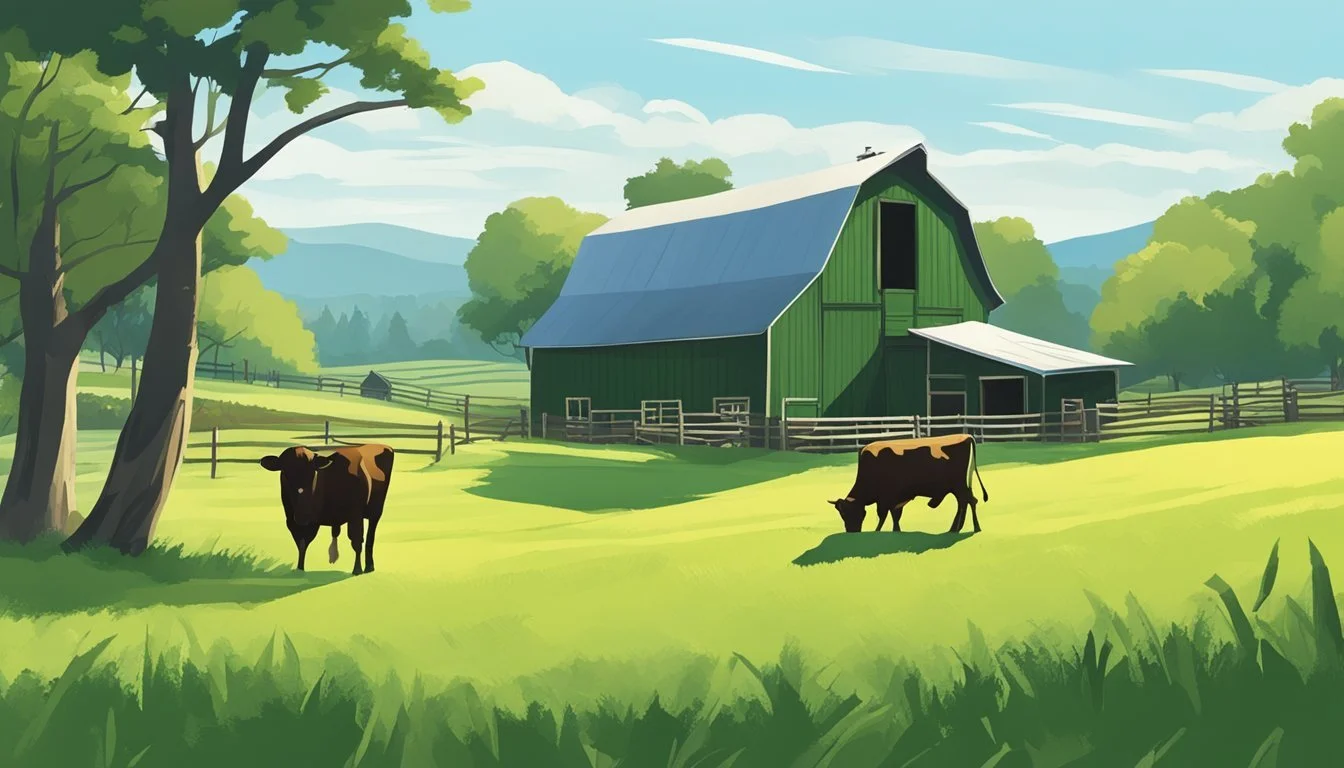Guide to Farming in Texas
Essential Tips for Successful Agriculture
This Article is Part of Our State by State Farming Guide
Embarking on a farming venture in Texas calls for a comprehensive understanding of the state's agricultural landscape. Given that Texas boasts a diverse climate and a variety of soil types, prospective farmers must conduct thorough research to determine the most suitable crops or livestock for their chosen location. The initial steps involve settling on the type of farming one aims to pursue, followed by analyzing the local environmental conditions. Moreover, obtaining the necessary permits and licenses is a crucial legal step, as these requirements vary by county and the nature of the farm.
Developing a solid business plan stands as an integral element in the journey to becoming a successful farmer in Texas. This plan should encompass a detailed budget that addresses both the predictable costs such as machinery, property, and marketing, as well as unforeseen expenses that arise during the establishment and operation of a farm. Networking with fellow farmers and agricultural organizations can be invaluable, offering a wealth of knowledge and resources that supports new farmers.
In addition to the logistical and financial aspects, Texas farmers benefit from adopting sustainable practices that align with the state’s unique climatic conditions. Local markets often favor produce that exemplifies sustainable farming, opening opportunities for small and urban farms to thrive. Texas agriculture is ripe with potential, and with the right approach, education, and planning, initiating a farm in this vast state can transform from a daunting prospect to a rewarding endeavor.
Getting Started with Texas Farming
This section serves as a practical guide for prospective farmers in Texas, providing clear and detailed information on how to navigate the agricultural landscape, evaluate land suitability, and formulate a strong farming business plan.
Understanding Texas Agriculture
Texas boasts a diverse agricultural sector, ranging from livestock to crop production. Prospective farmers should conduct thorough research on the type of farming that aligns with their interests and market demands. Regulations also play a crucial role, and it's important to understand the permits and licenses required. Engaging with USDA's Beginning Farmer and Rancher Coordinators can provide guidance on compliance and successful farm management.
Assessing Land Availability and Soil Conditions
Land is a key asset in farming, and availability in Texas varies by region. Farmers should assess the quality of soil and availability of water sources. This includes testing for pH levels and nutrient content—crucial steps to ensure the chosen crops or livestock can thrive. Potential farmers must also consider the proximity to markets and the cost of land per acre. Soil conditions are not uniform across the state, so it's advisable to consult local agricultural extension services for detailed information.
Region Soil Quality Water Source Market Proximity Cost per Acre North Texas High Ample Close $$ West Texas Varied Limited Variable $ East Texas Rich Abundant Close $$$ South Texas Diverse Moderate Variable $$
Planning Your Farming Venture
Creating a business plan is essential and should include funding options, a step-by-step implementation guide, and a clear plan for the type of farm to be established. Aspiring farmers should invest time in learning about farm management, either through courses or by working with experienced farm managers. A comprehensive business plan can also help in securing loans or grants. Type of farming will dictate equipment needs and investment levels—whether it's a small-scale organic operation or a large-scale cattle ranch.
Funding options include:
USDA loans
Private lenders
Grants
Investor partnerships
Remember that becoming a farmer in Texas is not just about tilling the land; it involves creating a flexible, well-researched, and regulated business blueprint to navigate this challenging yet rewarding field.
Texas Farm Operations
In Texas, successful farm operations rely heavily on robust infrastructure, strategic financial management, and effective marketing techniques. These key areas ensure that Texas farmers can maximize their productivity and profits in a competitive agricultural market.
Infrastructure and Equipment Needs
A Texas farm's infrastructure lays the foundation for its operational efficiency. Essential infrastructure includes storage facilities for equipment and harvested goods, and composting systems for waste management and soil enrichment. When considering equipment, one must invest in tractors and other machinery that suit Texas's varied terrain and the specific farming practices employed. Here's a quick rundown of basic equipment needs:
Tractors: Essential for plowing, planting, and other heavy-duty tasks.
Harvesting equipment: Suitable for the specific crops being cultivated.
Storage and cooling facilities: To preserve produce quality post-harvest.
Managing Finances and Investors
Financial management is crucial for a farm's sustainability. Farmers must regularly assess their cash receipts to keep track of income. Developing a comprehensive business plan is essential for securing investors and managing expenses. Certifications can play a role in achieving better market prices and should be considered in the financial plan. Clear, concise financial records encourage investor confidence and help in the strategic allocation of resources.
Marketing Your Farm’s Produce
Marketing is a key driver of farm profits. Farmers should adopt contemporary marketing strategies, including the use of social media, to reach a broader market. Branding strategies that emphasize the quality and sustainability of produce can attract customers. To gain a competitive edge, Texas farmers might consider obtaining certifications that affirm their commitment to safe and eco-friendly farming practices. Marketing efforts should focus on the following:
Local farmers' markets: Connect with the community and sell directly to consumers.
Social media campaigns: Utilize platforms to create awareness and drive sales.
Agricultural certifications: Use as a marketing tool to attest farming quality and standards.
Crops and Livestock in Texas
In Texas, the approach to farming encompasses a balance between selecting appropriate crop varieties and implementing livestock practices that prioritize animal welfare and ecosystem health. Texas farmers are known for their diverse agricultural practices that take advantage of the state's unique climate and soil conditions.
Crop Selection and Planting Strategies
When selecting crops, Texas farmers consider climate, water availability, and soil fertility. They typically plant a variety of crops such as cotton, corn, wheat, and sorghum, (how long does sorghum last?) which are suited to the state's varying environments. Strategies include:
Crop Varieties: Choosing drought-resistant and disease-tolerant varieties to reduce water usage and manage pests.
Planting Times: Adjusting planting times to capitalize on rain patterns and mitigate climate extremes.
Sustainable and Organic Farming Methods
Texas farmers are increasingly adopting sustainable and organic farming practices to enhance soil health and reduce environmental impact:
Regenerative Agriculture: Practices that restore soil health, such as no-till farming, cover cropping, and managed grazing.
Organic Inputs: Usage of natural fertilizers and pest control to maintain organic integrity and improve soil fertility.
Livestock Care and Animal Welfare
Animal welfare is a key consideration for livestock producers in Texas. Farmers are dedicated to:
Nutrition and Breeding: Ensuring proper nutrition and ethical breeding practices to promote the health and well-being of cows, goats, chickens, and more.
Grass-Fed Practices: Many producers raise grass-fed beef, which requires extensive knowledge of pasture management to maintain the health of the animals and the land.
Diversification and Crop Rotation
To create a resilient agricultural system, farmers in Texas practice diversification and crop rotation:
Diversity in Crops and Livestock: Integrating livestock with crop production to utilize ecosystems more efficiently and sustainably.
Crop Rotation: Rotating crops to break pest and disease cycles, which also contributes to soil fertility and health.
Farmers in Texas are dedicated to producing a diverse array of crops and livestock, doing so in ways that respect the balance between agricultural productivity and the health of the environment.
Legal and Regulatory Considerations
Navigating the legal and regulatory landscape is crucial for farmers in Texas. They must adhere to guidelines set forth by federal bodies as well as state-specific laws and incentives designed to support the agricultural sector.
Understanding USDA Regulations and Certifications
The United States Department of Agriculture (USDA) sets federal standards that farmers across the nation must follow. These include various permits, licenses, and certifications that are vital for legal operation. For instance, USDA's organic certification requires strict adherence to organic farming practices, which must be verified by a USDA-accredited agent. Texas farmers should:
Secure appropriate USDA permits for plant and animal health.
Obtain licenses if they are engaging in the buying or selling of commodities.
Pursue relevant USDA certifications for market advantage and consumer trust, such as organic or GAP (Good Agricultural Practices).
Local Texas Agriculture Laws and Incentives
Texas has its own set of regulations and legal requirements that complement federal guidelines. Recent legislative changes have emphasized protections for Texas rural landowners, lessees, and agricultural operators under the Texas Right to Farm Statute. Key points include:
Texas provides incentives such as property tax reductions for lands used for agriculture, promoting economic sustainability for farmers.
Implementation of state regulations for produce safety under the partnership between the Texas Department of Agriculture (TDA) and FDA to prevent foodborne illnesses.
Texas farmers are required to develop strategic inspection plans and report on enforcement actions as per the Texas Agriculture Code Section 12A.004.
Compliance with these standards is critical for the continuous operation of farming activities in Texas. Farmers are encouraged to stay informed on the latest developments in agriculture law to ensure best practices and optimize their operations legally and efficiently.
Advanced Farming Techniques and Innovations
In Texas, farmers are adopting cutting-edge technologies and innovative practices to enhance crop production while prioritizing sustainability.
Precision Agriculture and Data Management
Precision agriculture stands at the forefront of agricultural modernization, leveraging technology and data to make farming more accurate and controlled. Texas farmers are utilizing GPS technology and sensors to gather real-time data on soil conditions, crop health, and weather patterns. This enables a more efficient use of resources such as water, fertilizer, and pesticides, effectively reducing waste and environmental impact. Central to this approach is data management software that analyzes the data to inform decisions, leading to:
Increased yield: Through accurate planting, fertilization, and irrigation.
Cost savings: By optimizing resource usage and reducing waste.
Environmental protection: Through targeted application of inputs, protecting ecosystems.
Aquaponics and Hydroponics
In response to water scarcity and soil degradation, Texas farmers are turning to aquaponics and hydroponics as sustainable farming solutions. These soil-less farming methods are known for their water efficiency and reduced need for chemical fertilizers.
Aquaponics combines fish farming (aquaculture) with hydroponics, recycling fish waste to provide nutrients for plant growth. It is a closed-loop system that exemplifies sustainable innovation through:
Resource conservation: Integrating fish and plant production reduces the need for chemical fertilizers.
Organic production: Can produce organic crops since the symbiotic system provides all the necessary nutrients naturally.
Hydroponics involves growing plants in a water-based, nutrient-rich solution without soil. This method allows for:
Controlled environment agriculture: Plants can grow in controlled environments, which means higher yields and year-round production.
Space efficiency: Hydroponic systems can be set up in urban areas or places with poor soil quality, making it an ideal choice for varied Texan landscapes.
Sustaining Your Farming Business
In Texas, a thriving farming business not only demands initial investment and strategic planning but also a commitment to long-term sustainability. These practices ensure that a farm can withstand challenges and adapt to changing circumstances while supporting the next generation of farmers.
Building Resilience in Agriculture
Resilience is key to enduring the complexities of farming in Texas. Farms that weather economic and environmental fluctuations well typically have diverse revenue streams, such as multiple crop varieties, value-added products, or agritourism ventures. Incorporating sustainable practices, like water conservation and organic farming, can also hedge against adverse conditions and improve soil health. A resilient farm balances productivity with ecological care, ensuring profitability without depleting resources.
Diverse Revenue Streams:
Crop variety
Value-added products
Agritourism
Sustainable Practices:
Water conservation
Organic methods
Education and Community Involvement
Constant education is crucial for staying abreast of agricultural best practices. Texas farmers benefit from local programs, such as those offered by Texas A&M AgriLife Extension. Involvement in the agricultural community provides opportunities for mentorship, fostering relationships between experienced farmers and young farmers. Leveraging social media can also play a significant role in marketing and community building, helping farmers to reach new customers and share knowledge.
Education Resources:
Texas A&M AgriLife Extension programs
Online courses and webinars
Community and Social Media:
Local farming networks for mentorship
Social media for marketing and outreach
Understanding Farm Succession
Planning for succession is essential for the continuity of the farming business. It ensures that farms remain productive and within the family or community when the time comes for ownership to change hands. Succession plans should include legal structures, financial planning, and training for potential successors. This detailed planning allows for a smooth transition and supports the legacy of farming in Texas.
Steps in Farm Succession Planning:
Legal documentation and structures
Financial planning and assessment
Education and training for successors
Conclusion
Starting and maintaining a small farm in Texas requires dedication, planning, and a commitment to self-sufficiency. Farmers need to be strategic, informed, and adaptable to achieve success in the Texan agricultural landscape.
Those embarking on this journey should be prepared for the challenges ahead. A well-structured business plan and robust knowledge of the region's climate and soil are crucial. They must ensure that they have achieved the necessary legal compliance, including obtaining permits and licenses.
Networking with the agricultural community and leveraging existing resources contribute significantly to the learning curve for farmers. Particular attention should be given to financial planning, as securing funding is often a major hurdle for new farmers.
Key Considerations for Aspiring Farmers:
Type of Farm: Decide on crop farming, livestock raising, or specialized agricultural practices.
Research: Understand Texas's agricultural conditions and market demands.
Resources: Access to capital, land, and water sources.
Compliance: Proper permits and licenses are essential.
Community: Build relationships with other farmers and agricultural agencies.
Planning: Develop a detailed, realistic business plan.
The path to becoming a successful farmer in Texas can be rewarding, contributing to the state's rich tradition of agriculture and to the farmer's goals of self-sufficiency and contribution to the local economy. With the right approach, small farm owners can sustain and grow their operations in Texas's dynamic agricultural sector.









